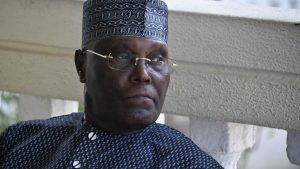South Africa: Meet South African Explorer Dr. Tebogo Makhubela, Winner of a National Geographic Wayfinder Award

“All major discoveries and impacts are born from small and consistent actions,” said Dr. Tebogo Makhubela, a 2025 National Geographic Wayfinder Award Recipient.
Dr. Makhubela, a pioneering South African geologist and senior lecturer at the University of Johannesburg, is one of only 15 recipients to receive the 2025 National Geographic Society Wayfinder Award, an honour that cements his place among the world’s leading explorers.
His groundbreaking research at the Cradle of Humankind, a UNESCO World Heritage Site renowned for its ancient secrets, has contributed to the discovery of ancient mysteries about mankind’s origins and evolution. The pioneering research he conducted on Homo naledi reshaped our understanding of evolutionary timelines and illuminated the complex relationship between ancient environments and the emergence of early humans.
The 2025 National Geographic Society Wayfinder Award, presented by Kia, is a prestigious honour recognizing exceptional individuals worldwide who are redefining leadership in science, conservation, education, technology, and storytelling. These National Geographic Explorers are celebrated for their innovative, boundary-pushing work that aligns with the Society’s mission to illuminate and protect the wonder of our world. The award includes a monetary prize to support their projects, access to the global Explorer community, and opportunities for further funding, leadership development, and collaboration.
In an interview with allAfrica’s Melody Chironda, Dr. Makhubela spoke about his journey, groundbreaking research, and the significance of receiving the 2025 National Geographic Wayfinder Award.
Congratulations on being named a 2025 National Geographic Wayfinder Award recipient! What does this recognition mean to you?
Thank you! This recognition is a very empowering achievement that will help me grow, both personally and professionally. As a National Geographic Explorer, I not only gain access to funding, resources, and training that will elevate my skills and work, but I am now connected with an incredible community of Explorers around the world who are pushing the boundaries of innovation in science, conservation, exploration, and education. What a remarkable group to now be a part of!
What inspired your initial passion for geology and the study of human origins?
My curiosity about the Earth and its processes, such as volcanoes, led me to study geology, and thereafter, I was drawn to wanting to know more about human origins after seeing the announcement of Australopithecus sediba in 2010.
When I completed my Bachelor of Science honours degree, I turned down a position in the gold mines as repayment for my bursary and instead, pursued my passion by going for a Master’s degree. That’s when I began testing different geochronologic techniques at the site where A. sediba was discovered in the Cradle of Humankind, and this decision truly led me on the path I am today.
Your research in the Cradle of Humankind, a UNESCO World Heritage Site, has uncovered groundbreaking insights. Can you tell us about a key discovery, like your work with Homo naledi, and how it’s reshaped our view of ancient ancestors?
I have been involved in the study of Homo naledi, an ancient human relative, since I was a PhD student and my work has contributed immensely to the naledi project over this time. One of the biggest contributions has been to the fossil-bearing sediments. Through geochemistry, my work has produced evidence that supports the conclusion that the sediments around Naledi fossils were not deposited by flowing water. This finding supports paleoanthropological and archaeological evidence that explored mortuary practices as means for how the fossils ended up in the caves; meaning, Homo naledi burials are believed to be the oldest burial practices yet in the hominin record.
Your work reveals how ancient environmental changes shaped human evolution. How do these insights inform our approach to modern challenges like climate change?
Using rocks as long-term records of climate provides two crucial insights for our present. First, they show that climate change is not new, but what’s unprecedented today is its speed and scale, which is faster than anything our ancestors ever faced. Second, they underscore that resilience is possible, but it demands flexibility and innovation. These are traits that defined our evolutionary success, as shown by the migrations and stone tool adaptations.
The Wayfinder Award celebrates explorers who push boundaries. What bold new directions or ideas do you plan to pursue as a Wayfinder with this award’s support?
With the support from the Wayfinder award, I intend to do more work that focuses on reconstructing past landscapes, climates, and ecosystems from terrestrial (land-based) records with greater detail and resolution for Southern Africa during the past 3 million years. Such detailed records do not yet exist, as most of what we know is based on sediments from the ocean seafloor. This will help us gain more insights into how early humans responded to changes and how the environment shaped us, both biologically and culturally. To achieve this, we will need to develop new scientific methods. My team and I are excited to do this thanks to the resources provided by the Wayfinder award.
As a field director for the Rising Star programme, you’ve helped uncover groundbreaking evidence about human evolution. What do you believe is the most urgent question about our origins that your research aims to answer next?
I am the geology principal investigator for five sites in the Cradle of Humankind. These five sites span the geological time period of the past 3.5 million years, which means that by studying all the records in all five sites in a systematic manner, we will be able to produce detailed information on the past landscapes, climates, and ecosystems of central Southern Africa. I think that is the most urgent question we need to answer in order to develop a detailed understanding of our origins in Southern Africa.
What’s the most thrilling or unexpected moment you’ve experienced exploring caves as a geologist and speleologist?
I have experienced many thrilling or unexpected moments while exploring caves, but the most recent takes the trophy. We were just exploring a new part of the cave, hoping to determine how deep it gets, when we discovered a wall full of articulated fossils that were well-preserved. These fossils turned out to be of hominids and added to the collection of fossils that we had already discovered, but with many missing parts. It was an amazing find that filled me with joy, even though I am not a ‘bones person’.
Looking back on your journey, what advice would you give young African scientists dreaming of making a global impact like you have?
My advice to young African scientists is that they should never fall out of love with science, and they should continue doing their part, however small they think it is. All major discoveries and impacts are born from small and consistent actions.
By Melody Chironda



